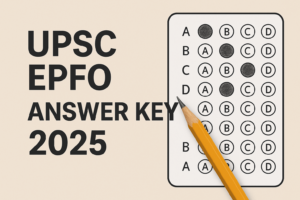Table of Contents
Approach to the answer
- Context: Begin by mentioning how social media and encrypted messaging platforms have revolutionized communication globally, enabling instant connections and information sharing.
- Emerging Security Threats: Highlight the potential misuse of these platforms for nefarious purposes, such as spreading misinformation, radicalization, planning criminal activities, and terrorist operations due to encryption and anonymity
- Need for Action: Emphasize the growing need to address these security concerns through effective measures and policies.
Measures Adopted to Address Security Implications:
- Governmental Measures:
- IT Regulations: Laws like India’s IT Rules, 2021, require platforms to remove illegal content and appoint compliance officers.
- Cybercrime Units: Specialized units monitor threats, track extremist content, and enforce platform compliance.
- Social Media Platforms:
- AI Moderation: Platforms use AI to flag/remove harmful content.
- Transparency: Regular reporting on takedown requests and privacy.
- Fact-Checking: Collaborations to curb misinformation.
- International Collaboration:
- Global Internet Forum (GIFCT): Major platforms collaborate to counter terrorism online.
- Cybersecurity Cooperation: Nations share threat data and collaborate on response strategies.
- Public Awareness:
- Digital Literacy Campaigns: Educating users on online safety and misinformation.
- Educational Programs: Cybersecurity integrated into curriculums.
- Law Enforcement:
- Surveillance Laws: Laws granting access to encrypted data for national security.
- Cyber Task Forces: Dedicated units monitor social media for security threats.
Suggested Remedies:
- Strengthening Encryption Laws: Introduce policies that allow lawful access to encrypted communication without compromising user privacy, ensuring that law enforcement can act in emergencies.
- Advanced AI and Machine Learning Tools: Invest in more sophisticated AI and machine learning systems to detect and prevent the spread of harmful content at a faster rate.
- Example: AI-powered Content Analysis: Google’s Content ID detects 99% of copyright infringement (Source: Google, 2020)
- Mandatory Identity Verification: Implement policies for identity verification on social media to prevent the anonymous spread of misinformation and online harassment, while safeguarding individual privacy.
- Example: Blockchain-based Authentication: Estonia’s e-Residency program uses blockchain for secure identity verification (Source: Estonia e-Residency, 2020)
- Public-Private Partnerships:
- Foster deeper collaboration between governments, tech companies, and civil society to create standardized protocols for handling social media-related security threats.
- Cybersecurity Infrastructure:
- Build robust national cybersecurity infrastructure to protect critical digital infrastructure from social media-related threats and ensure rapid response in case of cyberattacks.
Conclusion:
Addressing the security challenges posed by social media and encrypted messaging services requires a multi-pronged approach combining regulation, technology, international cooperation, and user education. A balanced approach that ensures both national security and the protection of individual privacy is essential.


 UPSC CSE Interview Schedule 2025: Dates,...
UPSC CSE Interview Schedule 2025: Dates,...
 UPSC EPFO Cut Off 2025 (Expected): Categ...
UPSC EPFO Cut Off 2025 (Expected): Categ...
 UPSC EPFO Answer Key 2025 Out (Unofficia...
UPSC EPFO Answer Key 2025 Out (Unofficia...

























